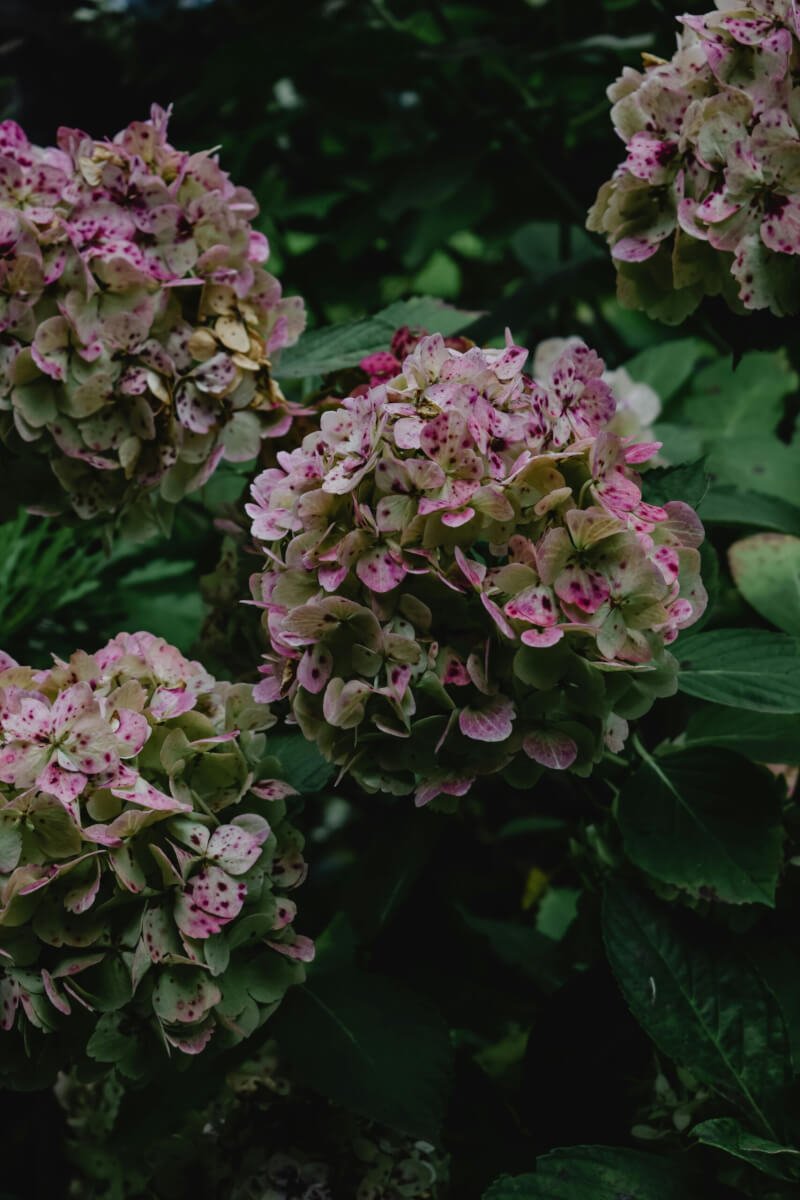Imagine transforming your tiny urban balcony into a lush oasis of greenery. With limited space, traditional gardening may seem like a challenge, but fear not! This article will guide you through the simple steps of building a trellis for vertical gardening in the city. By maximizing your vertical space, you can create a beautiful and thriving garden that not only adds a touch of nature to your urban environment but also allows you to grow a variety of plants, from vibrant flowers to fresh herbs. So grab your tools and get ready to embark on a fun and rewarding DIY project that will bring life and vibrancy to your urban living space.

Selecting the Right Location
Choosing a sunny spot
When selecting the location for your trellis, it is important to choose a sunny spot in your garden. Most plants thrive in full sunlight, so finding an area that receives at least six hours of direct sunlight per day is ideal. This will ensure that your plants get the necessary sunlight they need for proper growth and development.
Considering the available space
Another factor to consider when choosing the location for your trellis is the available space. Take into account the size of the trellis structure and the plants you intend to grow on it. You will need enough space for the trellis to stand securely without obstructing other plants or structures in your garden.
Assessing the structural support
The structural support of the location is crucial for the stability and longevity of your trellis. Ensure that the ground is firm enough to securely hold the trellis posts without them sinking or tipping over. If you plan to attach the trellis to a wall or fence, make sure it is strong enough to support the weight of the trellis and the plants growing on it.
Taking into account the surrounding environment
Lastly, consider the surrounding environment when selecting the location for your trellis. Take note of any nearby structures, trees, or vegetation that may provide additional shade or block sunlight. Also, consider the wind patterns in your garden as strong winds can damage the plants growing on the trellis. Choose a location that minimizes these potential obstacles and provides the best growing conditions for your plants.
Determining the Trellis Design
Identifying the purpose of the trellis
Before you can determine the design of your trellis, it is important to identify its purpose. Are you looking to create a decorative feature in your garden or are you aiming to maximize your growing space? Understanding the purpose of the trellis will help you decide on the most suitable design.
Deciding on the type of trellis
There are various types of trellis designs to choose from, including flat trellises, arched trellises, and A-frame trellises. Consider the aesthetic appeal you want to achieve and the plants you plan to grow, as different designs may be more suitable for certain plants. Additionally, think about the available space and the structure of your garden when deciding on the type of trellis that best fits your needs.
Considering the plant’s growth habit
When determining the trellis design, it is important to consider the growth habit of the plants you intend to grow. Some plants, such as tomatoes and cucumbers, have a vining or climbing habit and require a trellis with ample vertical support. Other plants, like beans or peas, may only need a trellis with horizontal support. Understanding the growth habit of your plants will ensure that you select a trellis design that accommodates their specific needs.
Evaluating the aesthetic appeal
Lastly, consider the aesthetic appeal of the trellis design. Think about the overall look and feel you want to achieve in your garden. Do you prefer a more traditional or modern design? Consider the materials, colors, and shapes that will best complement your garden and enhance its visual appeal. Remember, a well-designed trellis can be both functional and beautiful.

Gathering the Necessary Materials
Wooden or metal posts
To build your own trellis, you will need either wooden or metal posts as the vertical supports. Wooden posts are a popular choice due to their natural look and ease of use. However, metal posts offer increased durability and can withstand harsh weather conditions better.
Nylon or wire mesh
The choice of material for the mesh will depend on the plants you plan to grow on the trellis. Nylon mesh is suitable for lighter plants, such as flowering vines or small vegetables. Wire mesh, on the other hand, is more robust and can support heavier plants, such as melons or pumpkins. Consider the weight and growth habit of your plants when selecting the mesh material.
Screws or nails
Screws or nails are essential for securing the mesh to the posts and ensuring the trellis structure is stable. Choose screws or nails that are suitable for outdoor use and will withstand the elements. It is advisable to use stainless steel screws or galvanized nails to prevent rusting over time.
Drill or hammer
A drill or hammer is necessary for inserting screws or nails into the wooden or metal posts. A drill will allow for easier and faster installation, while a hammer can be used to manually drive nails into the posts. Choose the tool that you feel most comfortable using and that is compatible with the type of posts you have.
Tape measure
A tape measure will be useful for taking accurate measurements when preparing the site and installing the trellis. Ensure you have a tape measure that is long enough to measure the desired dimensions of your trellis accurately.
Level
A level is necessary for ensuring that the posts are straight and aligned. It will help you achieve a level and balanced trellis, which is important for both aesthetic and functional purposes. Use a bubble or laser level to get accurate readings.
Cable ties or twine
Cable ties or twine will be needed to secure the plants to the trellis structure. These will provide additional support for climbing or vining plants, keeping them in place and preventing them from leaning or falling. Choose durable cable ties or twine that can withstand the weight and growth of your plants.
Pliers
Pliers are handy for cutting and twisting wire, and for tightening cable ties. They will help you work efficiently and ensure a secure and neat installation. Choose pliers with a comfortable grip that are suitable for the types of tasks you will be performing.
Preparing the Site
Clearing the area
Before starting the installation of your trellis, clear the area of any vegetation, rocks, or debris. This will ensure a clean and organized workspace and prevent any potential obstacles during the installation process. Clearing the area will also make it easier to level the ground if necessary.
Removing any obstacles
Inspect the surrounding area for any obstacles that may interfere with the installation or stability of your trellis. Remove any large stones, tree roots, or other objects that could obstruct the placement of the posts or interfere with the plants’ growth. Clearing the site of obstacles will ensure a smooth and successful installation.
Leveling the ground if necessary
If the ground is not level, use a shovel or rake to level the area where you plan to install the trellis. A level ground is essential for ensuring the stability and alignment of the trellis posts. Take your time to ensure that the ground is level before proceeding with the installation.
Marking the positions for the trellis
Once the site is clear and level, mark the positions where you will be installing the trellis posts. Use the tape measure to measure and mark the desired distance between the posts. This will help you maintain consistent spacing and ensure a balanced and visually appealing trellis.

Installing the Vertical Support
Digging holes for the posts
Using a shovel or post hole digger, dig holes for the trellis posts. The depth and diameter of the holes should be in accordance with the size and height of your trellis. Dig the holes deep enough to provide sufficient support and prevent the posts from leaning or falling over.
Inserting the posts securely
Insert the trellis posts into the holes, ensuring they are centered and aligned with the marked positions. If using wooden posts, make sure they are treated with a weather-resistant sealant to protect them from rotting. If using metal posts, ensure they are firmly anchored in the ground and will withstand the weight of the trellis and plants.
Ensuring the posts are level and aligned
Use a level to check that the posts are straight and level. Adjust the posts as necessary, adding or removing soil at the base of the holes to achieve the desired alignment. Take your time to ensure that both posts are parallel and aligned, as this will impact the overall stability and appearance of the trellis.
Fixing the posts firmly in the ground
Once the posts are level and aligned, backfill the holes with soil or gravel, packing it firmly around the posts. This will provide additional support and stability to the trellis structure. Tamp down the soil or gravel to ensure it is compacted and prevents the posts from shifting or becoming loose over time.
Attaching the Mesh or Wire
Cutting the mesh or wire to size
Measure the height and width of your trellis structure and cut the mesh or wire to size accordingly. Use the appropriate tools, such as wire cutters or utility knives, to ensure clean and accurate cuts. Take care when handling sharp objects and wear protective gloves if necessary.
Securing the mesh or wire to the posts
Attach the mesh or wire to the trellis posts using screws or nails. Start at one end and work your way along, securing the mesh or wire at regular intervals. Ensure that the attachments are secure and tightly fastened to prevent the mesh or wire from sagging or coming loose over time. Use a level to ensure that the mesh or wire is straight and aligned.
Using screws or nails to fix it in place
For wooden posts, use screws or nails to fix the mesh or wire in place. Predrill small holes in the posts to prevent splitting when inserting screws or nails. For metal posts, use self-tapping screws or metal brackets designed for attaching wire mesh. Choose fasteners that are suitable for outdoor use and will withstand the weather conditions in your area.
Ensuring the mesh or wire is taut and level
As you attach the mesh or wire to the posts, ensure that it is taut and level. Gently pull the mesh or wire tight before securing it to the posts to prevent sagging or unevenness. Use the level to check that the mesh or wire remains straight and aligned as you progress along the trellis structure.

Adding Additional Support
Installing crossbars or horizontal supports
In some cases, additional support may be required to reinforce the trellis structure. This is especially true for larger trellises or those supporting heavy plants. Install crossbars or horizontal supports across the trellis, attaching them securely to the posts. This will help distribute the weight and provide added stability to the structure.
Stabilizing the trellis with diagonal braces
Diagonal braces can be added to further stabilize the trellis and prevent swaying or tilting. Attach diagonal braces from the top of each post to the bottom of the adjacent post, forming an “X” shape. Secure the braces firmly with screws or nails, ensuring they are at a slight angle to provide maximum support.
Using cable ties or twine to reinforce the structure
For additional reinforcement, use cable ties or twine to secure the plants to the trellis structure. This will help prevent the plants from pulling on the trellis or tipping it over. Attach the cable ties or twine to the mesh or wire and tightly wrap them around the plants, ensuring they are securely fastened without causing damage to the plant stems.
Planting and Training the Vines
Choosing suitable plants for vertical gardening
When selecting plants for your trellis, consider their growth habits and suitability for vertical gardening. Climbing or vining plants, such as tomatoes, beans, peas, or cucumbers, are ideal choices as they will naturally grow upwards and take advantage of the trellis support. Choose plants that are suited to your climate and provide the necessary care for their specific needs.
Planting the vines at the base of the trellis
Plant your chosen vines at the base of the trellis, ensuring they are positioned close to the structure. Gently guide the plants towards the trellis and secure them to the mesh or wire using cable ties or twine. Take care not to damage the plants’ stems or roots during the planting process.
Providing initial support for the vines
As the vines grow, they will require initial support to encourage them to climb the trellis. Use cable ties or twine to carefully tie the plants to the trellis structure, helping them find their way upwards. Be careful not to tie them too tightly, allowing room for growth while providing the necessary support.
Regularly training the vines as they grow
As the vines continue to grow, regularly check their progress and train them to grow along the trellis. Gently guide the stems towards the trellis and secure them with cable ties or twine. Encourage the plants to weave through the openings in the mesh or wire, providing additional support and ensuring an even distribution of growth.

Maintaining and Caring for the Trellis
Inspecting the stability of the structure
Regularly inspect the stability of the trellis structure to ensure it is still securely anchored in the ground. Check for any signs of leaning, shifting, or loose components. If any issues are identified, address them promptly to prevent further damage or potential collapse of the trellis.
Checking for any damage or loose components
In addition to stability, regularly check for any damage to the trellis components, such as broken mesh or loose screws. Repair or replace any damaged parts as necessary. Ensure that all fasteners, including screws, nails, or cable ties, are securely fixed and tightened to maintain the integrity of the trellis.
Pruning and trimming the plants regularly
Regular pruning and trimming of the plants on the trellis will help maintain their health and prevent overgrowth. Remove any dead or diseased branches, as well as any excessive growth that may be weighing down the trellis. Prune the plants to maintain a desirable shape and size, keeping them within the boundaries of the trellis structure.
Maintaining proper watering and fertilization
Proper watering and fertilization are essential for the health and growth of the plants on your trellis. Follow the specific care instructions for each plant, ensuring they receive adequate water and nutrients for optimal growth. Monitor soil moisture levels and adjust watering accordingly, taking into account any specific requirements of the plants.
Harvesting and Enjoying the Benefits
Monitoring the growth and development of the plants
As your plants thrive on the trellis, monitor their growth and development closely. Track their progress from seedlings to mature plants, observing any changes in appearance or behavior. Take pride in the successful growth of your vertical garden and appreciate the rewards it brings.
Harvesting the fruits, vegetables, or flowers
As your plants reach maturity, you will be rewarded with delicious fruits, vegetables, or vibrant flowers. Harvest them at the appropriate time, following the specific guidelines for each plant. Enjoy the pleasure of harvesting food or admiring the beauty of your blooming trellis, knowing that you have successfully built a functional and productive vertical garden.
Appreciating the beauty and functionality of the trellis
Take a moment to appreciate the beauty and functionality of your trellis. Admire the intricate design and the way it seamlessly blends into your garden. Whether it is a centerpiece or a supporting structure, the trellis enhances your garden’s aesthetic appeal while maximizing your growing space. Be proud of your accomplishment and the joy it brings to your outdoor oasis.
In conclusion, building a trellis for vertical gardening in the city requires careful consideration of the location, design, materials, and installation process. By following the steps outlined in this article, you can create a sturdy and attractive trellis that will support your plants’ growth and provide a visually captivating addition to your urban garden. Enjoy the benefits of vertical gardening and bask in the beauty and abundance it brings to your outdoor space. Happy gardening!


